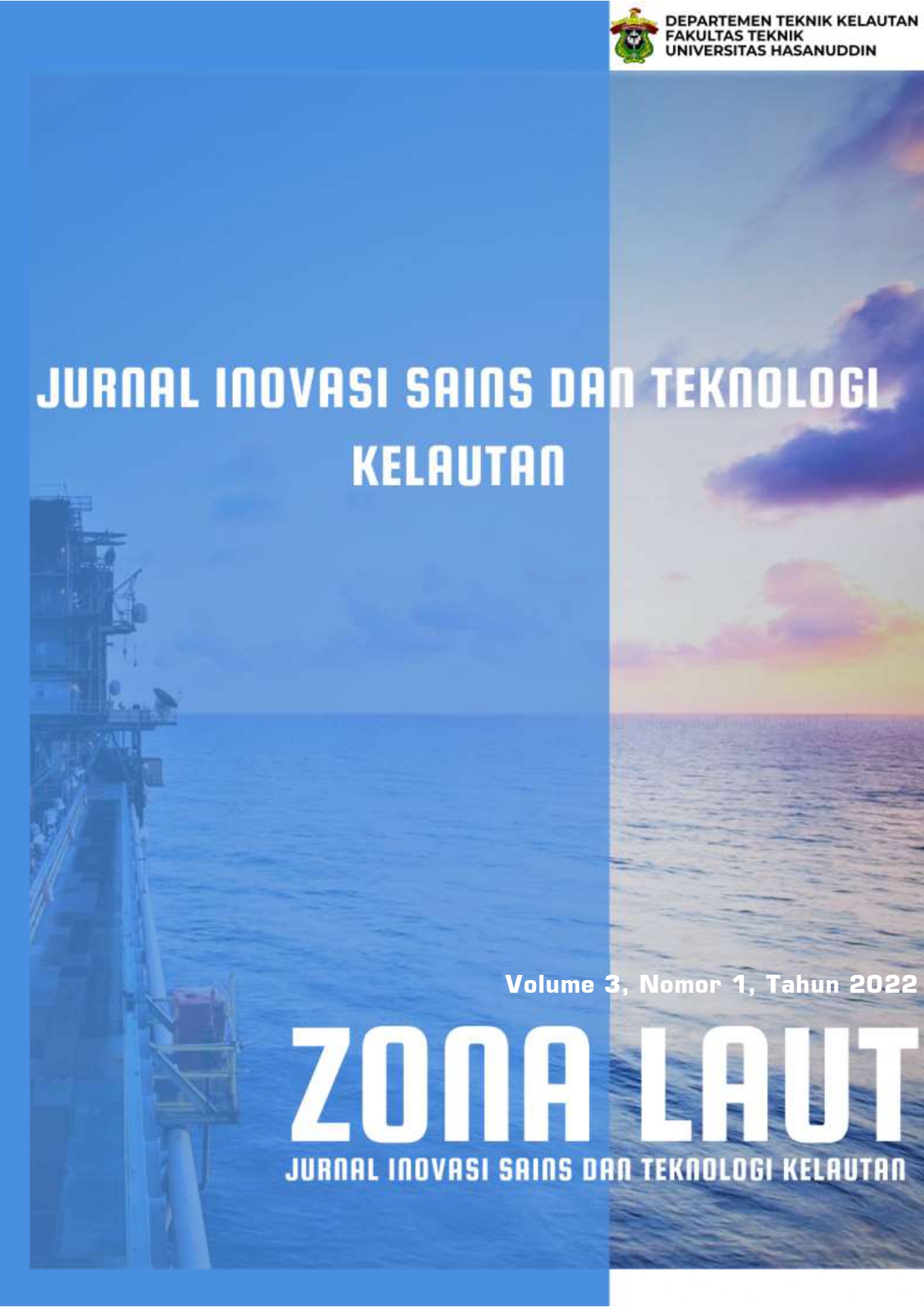The Effect Of Welding Position And Filler Diameter On The Results Of Welding Propeller Leaves With Gas Metal Arc Welding
Main Article Content
Abstract
The propeller is a key component in ship propulsion as a means of producing thrust to move the ship. The damage that occurs to the propeller on the propeller leaf is fouling, erosion occurs due to cavitation, cracks and bends occur due to collision. This research was conducted to analyze the effect of welding position and filler diameter on the results of welding repair of propeller leaf with GMAW. The tests carried out are tensile tests, hardness tests, impact tests and macrographic observations. Tensile test results on GMAW welding for maximum tensile strength at the 2G welding position have a high ultimate tensile strength value. In the 1G and 2G welding positions the macrographic observations were good because there were no welding defects found compared to the 3G welding position. The highest hardness results in 1G welding compared to 2G and 3G welding positions. The result of the highest impact test is the 1G welding position compared to the 2G and 3G welding positions. Based on the results of testing the difference in filler diameter, defects were found in the test samples at the position of 2G filler 1.2 mm, 3G filler 1.0 mm, and 3G filler 1.2 mm, while the position of 1G filler 1.0 mm, 1G filler 1.2 mm, and 2G 1.0 mm filler found no defects. For the tensile test, the hardness and impact on the 1.0 mm filler diameter have a high average value compared to the 1.2 mm filler diameter.
Downloads
Article Details

This work is licensed under a Creative Commons Attribution 4.0 International License.
Allow anyone to modify, improve, and make derivative works, even for commercial purposes, as long as they credit to you for the original work.
References
A. . Satriananta, M.G ; Hartono , Yudo; Dan Berlian, “Studi Analisis Kekuatan Poros Propeller Kapal Kmp. Pertiwi Nusantara Akibat Dikenai Torsi Dari Propeller,” Tek. Perkapalan, Vol. 7, No. 1, Hal. 421–430, 2019.
B. Roy Dan A. Yosef, “J Urnal T He W Ay,” Vol. 5, No. April, Hal. 52–69, 2019.
A. Amin, “Pengaruh Variasi Temperatur Interpass Terhadap Struktur Mikro Dan Fraktografi Haz Hasil Pengelasan Gmaw Metode Temper Bead Welding Pada Baja Karbon Sedang,” J. Tek. Mesin Uniska, Vol. 02, No. 01, Hal. 7–8, 2016.
A. Priyanto, “Pengaruh Posisi Pengelasan Oxy Acetylene Welding (Oaw) Dengan Variasi Diameter Filler Kuningan Terhadap Sifat Mekanis Pada Hasil Welding Repair Daun Propeller,” 2021.
Ninla Elmawati Falabiba, “Bab 2 Propeller,” Hal. 5–29, 2019.
I. Nitya Santhiarsa Dan I. Budiarsa, “Pengaruh Posisi Pengelasan Dan Gerakan Elektroda Terhadap Kekerasan Hasil Las Baja Jis Ssc 41,” J. Energi Dan Manufaktur, Vol. 3, No. 2, 2008.
A. Saputra Dan Tuparjono, “Pengaruh Besar Ampere Terhadap Cacat Las Pada Pengelasan Baja Lunak Dengan Menggunakan Pengelasan Smaw Posissi Pengelasan 2f,” Manutech J. Teknol. Manufaktur, Vol. 13, No. 01, Hal. 41–50, 2021.
V. Bhaskara, “Pengaruh Normalizing Dengan Variasi Waktu Penahanan Panas (Holding Time) Baja St 46 Terhadap Uji Kekerasan, Uji Tarik, Dan Uji Mikrografi,” J. Tek. Perkapalan, Vol. 6, No. 1, Hal. 142–149, 2018.
M. N. Wicaksono, “Analisa Variasi Holding Time Pada Aluminium 6061 Terhadap Uji Impak , Struktur Mikro , Dan Uji Kekerasan,” Hal. 1–79, 2018.
Dwisetiono, Rekayasa Material Pada Pengecoran Propeler Kapal Perikanan. Surabaya: Hang Tuah University Press Universitas Hang Tuah Jl. Arif Rahman Hakim No. 150 Surabaya, 2019.

